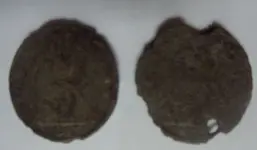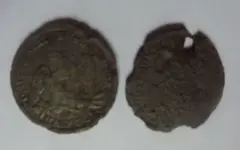Kevo_DFX
Hero Member
- Joined
- Sep 5, 2008
- Messages
- 565
- Reaction score
- 132
- Golden Thread
- 0
- Location
- Greensburg, PA
- Detector(s) used
- DFX
Hi All.
I've been working the same site for a a few months now. It does not produce a lot of finds, but everything that comes out of the ground is period. It was probably active around 1800 until about 1870. I've found three large cents there, and a fatty Indian. Those have been the only coins until these popped out of the ground, a month apart and 25 yards away from each other.


The one on the left is largely intact and is a 1847 O Seated Half.
The one on the right is an 184? O seated half.
I think it is likely the broken one is also a 47. They are made of some base metal like pewter. That would mean two matching seated halves have come from a field that produced no silver.
Why would this happen?
I've been working the same site for a a few months now. It does not produce a lot of finds, but everything that comes out of the ground is period. It was probably active around 1800 until about 1870. I've found three large cents there, and a fatty Indian. Those have been the only coins until these popped out of the ground, a month apart and 25 yards away from each other.


The one on the left is largely intact and is a 1847 O Seated Half.
The one on the right is an 184? O seated half.
I think it is likely the broken one is also a 47. They are made of some base metal like pewter. That would mean two matching seated halves have come from a field that produced no silver.
Why would this happen?



